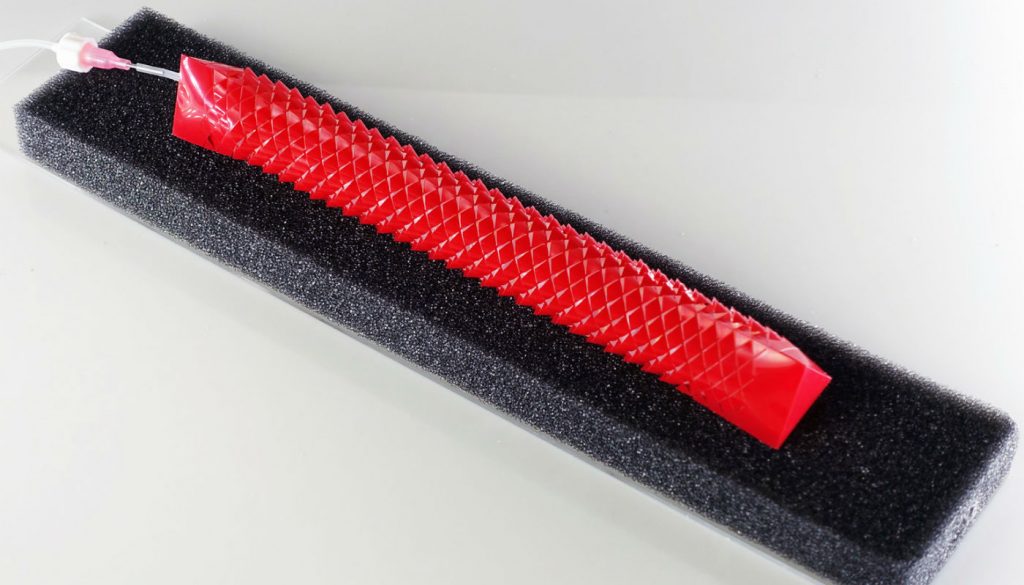Engineers have created a new soft robot using the ancient Japanese art of kirigami and the unique locomotion style of a snake.
Snakes make the most of their sleek design: they wriggle into tight spaces, scale trees, slither across all types of terrain and even swim. So it’s no surprise that engineers used them as inspiration for a new soft robot design.
The secret to translating these serpentine qualities into robotic movements is the scales, as a team of engineers from the Wyss Institute at the Harvard John A. Paulson School of Engineering and Applied Sciences (SEAS) discovered.
As a snake moves, the positioning and shape of the scales allows them to grip the ground and propel forward, which is called ‘friction-assisted locomotion’. To mimic this process, the team used the Japanese art of kirigami – a paper craft that relies on cuts, rather than folds, to change the properties of the material.
Using kirigami allowed their soft robot to crawl without any rigid components. As the robot stretches, the flat kirigami surface is transformed into a 3D-textured surface, which grips the ground like a snake’s scales would.
Assembling the ssssssssssnake
Creating the soft robot starts with using a laser to embed an array of centimetre-scale cuts into a plastic sheet. Once cut, this sheet is then wrapped around a tube-like elastomer actuator, which expands and contracts like a balloon.
When the actuator expands, the kirigami ‘scales’ pop out; when it deflates the cuts fold flat. This creates the friction assisted locomotion needed to propel the soft robot forward. The developers built an untethered version of the robot, which packed its on-board control, sensing, actuation and power supply systems into a tiny tail.
They also experimented with different scale shapes and sizes, including triangular, circular and trapezoidal – the latter proved most effective at propelling the soft robot forward. It’s probably no coincidence this shape also most closely resembles the shape of a snake’s scales.
“There has been a lot of research in recent years into how to fabricate these kinds of morphable, stretchable structures,” said Admad Rafsanjani, a postdoctoral fellow at SEAS and one of the publisher’s of the research paper in Science Robotics.
“We show that the locomotive properties of these kirigami skins can be harnessed by properly balancing the cut geometry and the actuation protocol.”
The developers have plans to optimise the design by further exploring the relationship between the shape of the cuts and the actuation protocol.
“We believe that our kirigami-based strategy opens avenues for the design of a new class of soft crawlers,” said Katia Bertoldi, the paper’s senior author, and an associate faculty member of the Wyss Institute and professor of applied mechanics at SEAS.
“These all-terrain soft robots could one day travel across difficult environments for exploration, inspection, monitoring, and search and rescue missions, or perform complex laparoscopic medical procedures.”
This isn’t the first time paper crafts have been used to create innovative designs. The Wyss Institute was involved in a project late last year that used origami principles to create artificial muscles for soft robots.
